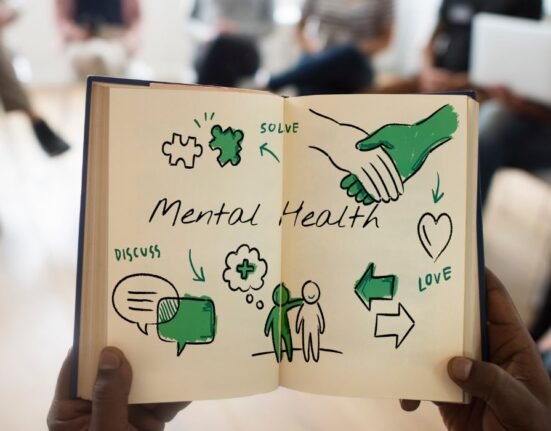Try to remember the time when you had to face an interview, appear for an important exam or give a presentation and notice everything that you were experiencing in your body and in your mind. All the situations mentioned above are objective and stressful ones. It is very likely that you would be experiencing a complex emotion called “anxiety”. Its degree may vary but for all of us, anxiety is an unwanted but a familiar visitor which very frequently intrudes in our lives and keeps worsening our performance. So, is anxiety always a bad thing? Well, it is not designed to do bad only.
Anxiety is a natural emotion which has been developed inside us for our own benefit. For example, it makes us alert, aroused and motivated so that we can prepare well for future performance. It also works as a fast built-in alarm system for detecting threats and respond immediately to keep you safe.
However, you can reap these benefits only when the anxiety remains at an optimum level and that too for a short duration. When anxiety is very high, it becomes distressing and its natural purpose of benefitting you is defeated. The problem starts when it interferes with important aspects of your life-making. That’s why you feel helpless.
You start losing confidence as well as motivation and become highly sensitive or might feel the anxiety of having anxiety and inability to control. Further, it may lead to many negative emotions like shame, guilt or depression. You start avoiding to protect yourself from distress (which obviously is a maladaptive strategy), then which ensures that you remain stuck in a vicious cycle of distress which keeps vacuums you in it like a whirlpool.
So, how to regulate your anxiety?
Before delving into the ‘solutions that work’, lets first understand how and why anxiety is created in our brain in the first place.

Anxiety pathways in the brain:
Cortical pathway
Cortex is the outer portion of cerebrum which is the front part of our brain. It enables you to process incoming information so that you can think and perceive. It not only helps you to process sensory (visual, auditory, olfactory, tactile, gustatory) information but also attaches meanings to them and forms memories which you can access and use in future. It helps you in utilizing your impressive cognitive abilities like language (comprehension and production), thinking, analyzing, reasoning, imagining, planning and anticipating.
The cortical pathway begins with your sense organs from where the information is sent to the thalamus (a part hidden deep inside brain above hypothalamus) which being the central relay center, sends the information to the appropriate lobe. Frontal lobe receives information from other lobes and helps in the integration and interpretation of information.
Interpretation of information and anticipation of future events is based on that. Indeed these impressive abilities are unique to humans but unfortunately are also a potential source of ‘anxiety’. After all, your pet doesn’t care/anticipate when and how her overpriced favourite pet food will come.
In short, the cortex is important in dealing with anxiety because it helps you in perceiving and thinking, which sometimes leads to faulty interpretations of present information and negative anticipation of future events.
Amygdala pathway
In anxiety management, a lot of focus is on dealing with cortical anxiety by changing the negative thought patterns. However, interestingly, 90% of the experience of anxiety is physical. And this is where amygdala comes into the picture. It is responsible for the physical experience of anxiety. Amygdala is a small almond-shaped part of our emotional brain or limbic system which has thousands of neuronal circuits responsible for the experience of love, bonding, fear, anger and sexual behaviour. Along with hippocampus, it has also an important role in emotional memories.
When you experience anxiety, it seems that it’s an automatic process; increased heart rate, trembling hands and everything happening beyond our awareness and control. So, what to do if the amygdala is activated? Thalamus sends information to lobes for interpretation but at the same time, it also sends that information to the amygdala. Thus, the amygdala pathway is the more direct route and that is why it can detect the threat very fast even before the cortex processes the information and you can become aware of it.
Amygdala was initially developed in humans so that they could react quickly and ensure safety by taking an action in emergencies. As humans evolved, useless organs became vestigial and new parts developed to adapt to the changing environment. For e.g., neocortex in brain developed which has made modern man capable of analyzing, planning and anticipating. Thankfully, the old brain i.e. amygdala was retained. Thank your creator that on seeing a snake, you don’t spend time thinking, analyzing or planning. The only problem with amygdala is that it gets activated on every stimuli labelled as ‘threat’. Based on the individuals’ perception and conditioning.

Ways to deal with Cortical Dominant Anxiety:
Cognitive Restructuring
Psychologists use Cognitive behaviour therapy (CBT) to dig deep into the mind for changing the faulty/illogical thinking patterns of negative anticipatory ideas. Many a time, just becoming aware of our own irrational thoughts which cause stress and anxiety, is enough for making our anxiety disappear. For better outcomes, a trained facilitator work with the individuals to develop their awareness and train them to ameliorate their faulty belief systems.
Mindfulness-based techniques
Being mindful refers to ‘living in the present moment’- just observing and being aware of it without any judgment. Cortical anxiety is all about the thoughts of the future so when one learns to practice mindfulness, the negative thoughts about future are less likely to pop up in the consciousness. Mindfulness techniques can be combined with cognitive therapy and thus becomes more powerful and are called Mindfulness-based cognitive therapy (MBCT).
Ways to deal with Amygdala Dominant Anxiety:
Amygdala Retraining
You have to retrain your amygdala to remove the label of ‘threat’ from all stimuli which are objectively harmless but are only subjectively perceived dangerous by you. Cognitive therapy doesn’t work with amygdala-based anxiety. Remember the time when you were trembling with anxiety and you try to think logically. What happens? Your mind understands the illogicality of your anxiety but still, your body is reacting in an anxious manner.
Amygdala doesn’t understand ‘the language of thoughts’. It only understands the language of experience/exposure. You can’t tell the amygdala to deactivate itself. You have to train it by showing. So, there are two ways:
1. Calming down the agitated body and providing relaxation: This can be achieved by:
• Progressive muscle relaxation: When your muscles are relaxed, your anxiety will automatically be reduced. Many techniques like Jacobson progressive muscle relaxation (JPMR) can be used to relax your tense muscles which in turn relaxes the amygdala-based anxiety as well.
• Guided imagery: Visualizing natural landscapes, past pleasant experiences or future positive events relaxes the body and thus calms down the amygdala.
• Breathing exercises: Deep breathing or spaced breathing (deep inhalation and exhalation spaced by a brief pause in between them) is the simplest technique to quickly relax your body during panic attacks.
• Physical activities: Activities like dancing, running, exercise, swimming etc. Are also proven effective techniques in calming down an anxious brain. Thus relaxing the body too.
• Meditation and Yoga: Research proves that different types of meditation techniques and Yoga are also very effective in training the body and mind to remain in a calm state.
2. Exposure techniques:
Most of the times, anxiety is illogical and the perceived threat is completely harmless. But in order to let the amygdala understand this, one needs to expose it to potentially threatening situations. Exposure can be actual physical exposure like forcing oneself to perform on stage to let go of the stage fright.
Imagining exposure: imagining oneself speaking on stage in front of hundreds of people. In brief, it is ‘anxiety induction for anxiety reduction’.
In both cases (real/imagined exposure), a hierarchy of potentially threatening situations can be made ranging from least threatening to most threatening and the person is exposed to them one by one gradually. This can be facilitated by a trained psychologist.
So, in order to successfully let go of the anxiety, one needs to utilize both amygdala pathway focused techniques as well as cortical pathway focused techniques. Only then the cortex and amygdala can become an asset rather than being an out of control trouble maker. So, next time you become anxious, be aware! Observe what is happening and implement one of the proven techniques to regain control over your brain.












Leave feedback about this